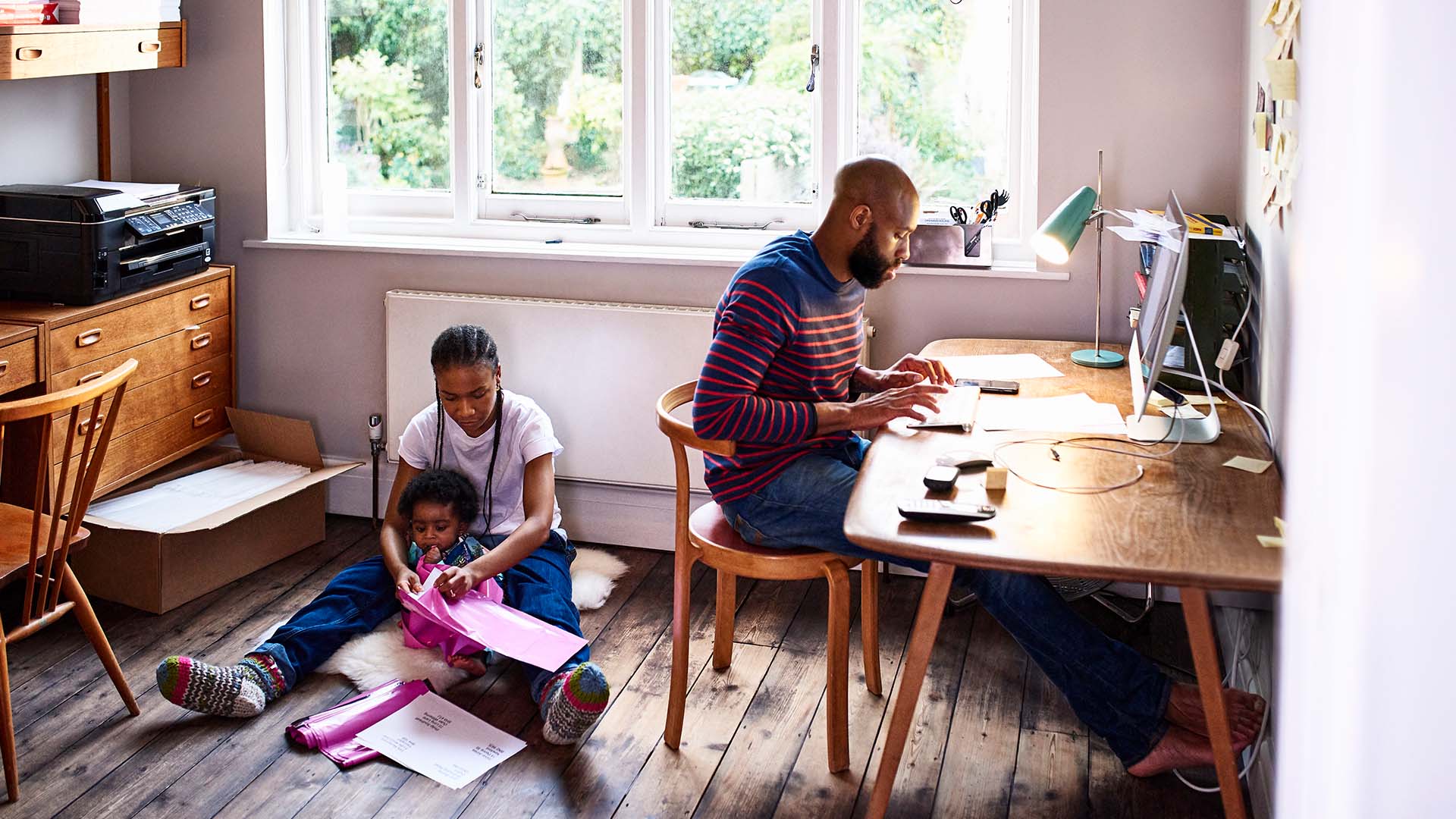Key points:
- In the pandemic’s weak labor market, men have become 8.6% and women 12.1% less comfortable asking for a raise, according to an Indeed survey, with 74% of men and 58% of women now reporting they feel at ease asking for more money.
- In contrast, the COVID-19 crisis has made employees significantly more comfortable with asking for work flexibility, with younger women leading the way.
- Despite the pandemic, men ages 18-29 have become more comfortable asking for a promotion, which may be because they are putting in extra hours.
Since March 2020, COVID-19 has upended the US economy. Millions of people have lost their jobs and the damage has been widespread, though uneven. Job loss has disproportionately affected women. Their employment plunged 17.9% in April and still sits 6.1% below its pre-COVID level. In comparison, men’s employment is down 5%. Additionally, more women have exited the workforce than men, with women’s labor force participation rate 3.6% below the pre-COVID level compared with 2.5% lower for men.
These data demonstrate that the pandemic has thrown a wrench in women’s progress in the workplace. Even before coronavirus, gender parity in the labor force had not been fully achieved. It now has slipped further.
Gender parity isn’t confined to the pay differential between men and women. It also comprises other indicators of equality in the broader labor market. One way of taking measure of the gap is to examine such questions as the relative comfort of men and women in asking for work-related benefits, like a raise, a promotion, or job flexibility.
Indeed surveyed 2000 American adults in December 2020 to find out how the pandemic is impacting workers’ feelings about asking for these benefits. Specifically, we compared respondents’ comfort levels now with asking for a benefit versus their comfort before COVID-19.
In the pandemic, workers have become less comfortable asking for a raise or promotion, we found, probably reflecting the slack labor market. However, they are now more comfortable asking for more flexible hours, work locations, or schedules, with women’s comfort levels changing more than those of men. It is likely that the trend is directly related to the pandemic as workers seek accommodations to protect their health or care for children.
Pandemic discourages pay, promotion requests, but raises comfort on flexibility
Asking for a pay raise can feel risky even in the best of times. When economic turmoil is rampant, it can seem downright scary. Before the pandemic, 81% of men and 66% of women said they felt comfortable or somewhat comfortable asking for a raise at their current job. That has now dropped to 74% of men and 58% of women, declines of 8.6% and 12.1% respectively.
Asking for a promotion is a similar story. Previously, 82% of men felt comfortable doing so versus 70% of women. Those numbers are down 4.5% for men and 8.5% for women.
The differing levels of ease men and women feel about asking for a raise or promotion existed before COVID-19, but the gap has widened during the pandemic. It’s reasonable to think that the gender comfort gap might be because men work disproportionately in industries where it’s easier to ask for more money or a step up. However that’s not driving the results here. Even when controlling for industry, gender still plays a significant role in the comfort level workers report with asking for a raise or promotion.
Comfort with requesting flexibility has increased
Asking for greater flexibility is a different story. In the survey, women said they were significantly more comfortable asking for accommodations on work location, schedule, and hours. In particular, 80.1% of women said they felt comfortable asking for flexibility on work location, up from 72.6% before coronavirus, a 10.4% rise. Men showed less than 2% increases in comfort with asking for flexibility on location or schedule, and actually became slightly less comfortable asking for flexibility in total hours of work.
Two mechanisms appear to be at play. Workers tend to be more cautious about asking for a raise or promotion when the labor market is weak. In contrast, attitudes toward flexibility reflect the nature of the pandemic. Lockdowns and shelter-in-place orders have prompted many employers to let workers do their jobs remotely. The pandemic has also forced the issue on schedules and hours. Parents in particular must make a balancing act work, given school and daycare closures.
Comfort in asking for pay differs across age groups
Age is another factor affecting comfort with asking for a benefit. Older respondents showed a sharper decline in comfort asking for a raise or promotion during the pandemic than younger workers did. Older workers are probably aware that retirement is only a few years away and they may not want to rock the boat when the labor market is weak. In addition, workers with longer tenure became less comfortable asking for more money or a higher position during the pandemic.
Surprisingly, men ages 18-29 feel more at ease asking for a promotion now. Before the pandemic, 74% of men in that age group felt comfortable asking for a step up. That’s risen to 78%. For women ages 18-29, comfort asking for a promotion dipped slightly, from 69% to 68%.
It’s not clear why younger workers feel better about promotion requests, but remote work has blurred the line between professional and personal life. It could be that they are working more hours and feel they deserve to move up. Meanwhile, those working at jobs sites such as warehouses or grocery stores have become more essential. Younger essential workers may have fewer family obligations and be better able to put in extra hours. That extra effort may make them feel they also are due for a promotion.
A closing gender gap on asking for flexibility
Both men and women are generally more comfortable asking for flexibility now than before COVID-19. What’s more, the gender gap in ease about asking for flexibility has narrowed substantially in most areas. Before the pandemic, in all age groups, men led women in comfort with asking for flexibility on work location, schedule, or hours. Now, in some cases, women have overtaken men. In particular, women ages 30-41 have seen a 16% increase in comfort with asking for accommodations on work location and now lead men in that age bracket by three percentage points. Women in the 18-29 and 30-41 age groups also now lead men in comfort with asking for flexible hours by two and four percentage points respectively.
Comfort in asking for flexibility increased across most age groups
One striking exception to the greater comfort with asking for flexibility was a 10.1% drop in the ease women ages 54-65 felt about requesting accommodations in hours worked. In a weak labor market and with women nearly twice as likely as men to be working part-time, older women simply may not want to give employers the opportunity to reconsider their hours.
The flexibility gains of younger women are probably an effect of the pandemic rather than a slack labor market. Often, these women have children. With many schools and childcare facilities closed, employers need to offer flexibility on location, timing, and workload to retain them. The question is will these women still feel at ease asking for flexibility and will employers remain accommodative after the COVID-19 crisis is over.
Future expectations when asking for benefits
To gauge respondents’ expectations about the future, we asked when it would be better to ask for a pay raise, promotion or flexibility: sometime in the next 12 months or more than 12 months from the time of the survey. Men outpaced women across the board in reporting they would be comfortable asking for more money, a higher-ranking position, or job-related flexibility sometime in the next 12 months.
The widest gap was a 15-percentage-point spread in the pay raise category. Some 67% of men cited the next 12 months as a better time to ask for a raise compared with 52% of women. This result has important implications for closing the gender wage gap. During the pandemic, women have become less at ease asking for more money and the comfort gap with men has widened. If fewer women believe sometime in the next 12 months will be a better time to ask for a raise, it may reduce their lifetime earnings relative to that of men. In this respect, the pandemic seems to be hindering progress on closing the gender pay gap.
Overall, a higher percentage of men than women viewed the next 12 months favorably. The industries people worked in didn’t affect the time period they considered better for asking for flexibility in total hours or schedule, but was significant for flexibility on work location. This probably reflects the fact that some industries will return to pre-pandemic work sites, while others may continue to support remote work.
Conclusion
During the pandemic, both men and women report they’ve become less comfortable asking for a pay raise or promotion. The decline for women has been more pronounced.
By contrast, workers have become more comfortable with asking for flexibility. It remains to be seen whether this trend carries over after COVID-19 recedes. If employers become less accommodative once the pandemic is under control, it will signal that they are not meeting the needs of women, which could prompt some women to leave the labor force. It’s also possible that the labor market will tighten again, giving workers the bargaining power to ensure flexibility carries over into the post-COVID-19 period.
There’s still much progress to be made in reducing the gender gap in attitudes about asking for job benefits. In every category, a higher percentage of men than women say they see sometime in the next 12 months as a better time to ask for job-related benefits. This is not a good sign for the prospect of achieving gender parity. Ensuring women’s equality in the labor market is essential for building a healthy economy.
Methodology
This blog post is based on an Indeed online survey conducted in December 2020 of 2000 employed US adults ages 18-65. Weights were applied to match respondent distributions across age, educational attainment, race/ethnicity, sex and martial status with the 2020 Current Population Survey’s Annual Social and Economic Supplement.
Regressions were weighted and run with robust standard errors. Statistical significance was determined at the 0.05 level. Control variables in the regressions included industry indicators, a binary variable whether the respondent was the only adult in their household, gender of respondent’s direct supervisor, gender of the majority of respondent’s colleagues, tenure at current employer, whether respondent was working part-time or full-time, a binary variable on marital status, and annual household income. The industry indicators covered 13 sectors. Respondents selected which industry best described their situation. Annual household income was broken into five buckets: 0 to $49,999, $50,000 to $74,999, $75,000 to $99,999, $100,000+, and did not disclose.
Respondents were asked their comfort level before the pandemic and at the time of the survey with asking the manager or decision maker at their current job for a pay raise, promotion, or flexibility on work location, schedule, or hours. Possible responses were ‘very comfortable, ‘somewhat comfortable,’ or ‘not at all comfortable.’ ‘Very comfortable’ and ‘somewhat comfortable’ were combined to ‘comfortable.’
For future expectations, respondents were asked when they would feel more comfortable asking for a pay raise, promotion, or flexibility on work location, schedule, or hours. Respondent answers were sorted into ‘sometime in the next 12 months,’ versus more than ‘12 months from now,’ or ‘I don’t know.’






